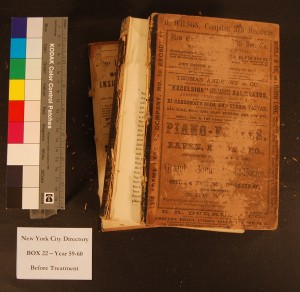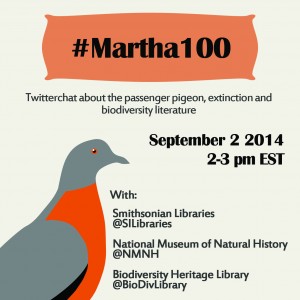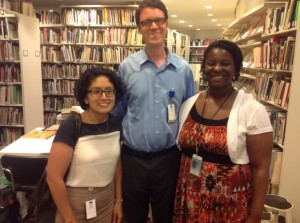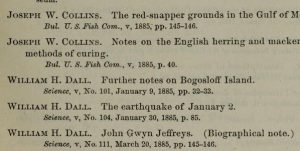 This post was written by Katie Boodle, Book Conservation Lab intern.
This post was written by Katie Boodle, Book Conservation Lab intern.
As part of the Smithsonian Libraries’ Conservation of Library Materials Internship, I had the opportunity to work on projects that addressed common conservation problems in archives and special collections: preparing works for digitization and creation of enclosures. Conservation in general is focused primarily on the stabilization of ethnographic, historical, and/or artistic objects for future or continued use. A lot of our treatment decisions, therefore, are made based on how the object will be used in the future, as well as how the objects were used in the past and the specific type of damage done to them. The main project that I worked on during my six weeks was the stabilization of a set of Trow’s New York City Business Directories dating from 1858-1867 located in the collection of Cooper-Hewitt Smithsonian Design Museum Library. The main purpose of repair was to prepare the volumes for digitization.





